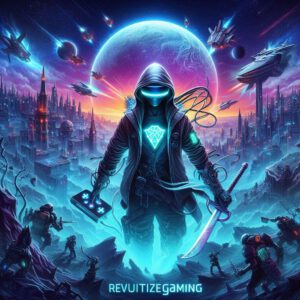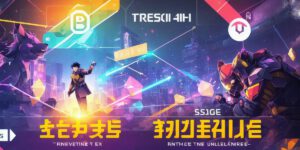Creating an NFT game: A comprehensive guide for beginners
NFT games have been gaining popularity in recent years, and with good reason. These games allow players to own unique, rare, and valuable assets that can be traded on the blockchain. In this guide, we’ll take you through the steps to create your own NFT game from scratch. We’ll cover everything from conceptualization to launch, including how to get started with the necessary tools and technologies.
Step 1: Define your game concept
Before you start designing your game, it’s important to have a clear idea of what you want it to be. This includes defining the rules, objectives, and mechanics of the game. You should also consider the type of NFTs that players will be able to collect, such as characters, items, or land.
One way to get started is to do some research on existing NFT games in your genre. Look at what they’re doing well and what areas they could improve upon. This will give you a better understanding of what players are looking for and help you create a game that meets their needs.
Step 2: Choose your blockchain platform
There are many different blockchain platforms to choose from when creating an NFT game, including Ethereum, Binance Smart Chain, and Polygon. Each platform has its own strengths and weaknesses, so it’s important to do some research before making a decision. Some factors to consider include transaction speed, gas fees, and developer support.
It’s also worth noting that some platforms are better suited for certain types of NFTs. For example, Ethereum is often used for collectibles like digital art, while Binance Smart Chain is more commonly used for games and other interactive applications.
Step 3: Create your game mechanics
Once you’ve defined your game concept and chosen your blockchain platform, it’s time to start designing the mechanics of your game. This includes creating the rules, objectives, and gameplay elements that players will interact with.
Some common gameplay mechanics in NFT games include battling monsters, collecting resources, and building structures. It’s important to make sure that these mechanics are balanced and fun for players, while also providing a way for them to earn or trade NFTs.
Step 4: Design your NFTs
In addition to gameplay mechanics, another key aspect of an NFT game is the design of the NFTs themselves. These can be anything from characters and items to land and buildings. The important thing is to create unique, valuable assets that players will want to collect and trade.
There are many tools available for designing NFTs, including Unity, Unreal Engine, and Blender. It’s important to choose a tool that is compatible with your chosen blockchain platform and that you are comfortable using.
Step 5: Develop your game
Once you have all of the pieces in place, it’s time to start developing your game. This includes coding the smart contracts that will govern the gameplay mechanics, as well as designing the user interface and creating the NFTs themselves.
Development can be a complex process, so it’s important to have a solid understanding of the technologies involved. There are many resources available online for learning how to develop NFT games, including tutorials, documentation, and community forums.
Step 6: Launch your game
Finally, it’s time to launch your game! This involves deploying the smart contracts to the blockchain, creating a marketplace for trading NFTs, and promoting your game to potential players.
There are many different ways to promote an NFT game, including social media marketing, influencer outreach, and content marketing.



